How Blockchain Is Revolutionizing Supply Chains

Have you ever paused before adding a product to your shopping cart, wondering: “Is this product really genuine? Was it ethically produced?” If so, you’re definitely not alone. Today, we as consumers are becoming more conscious about the products we buy and the stories behind them. Businesses, too, feel the pressure, scrambling to guarantee the authenticity and ethical sourcing of their products.
Why Traditional Supply Chains Just Aren’t Cutting It
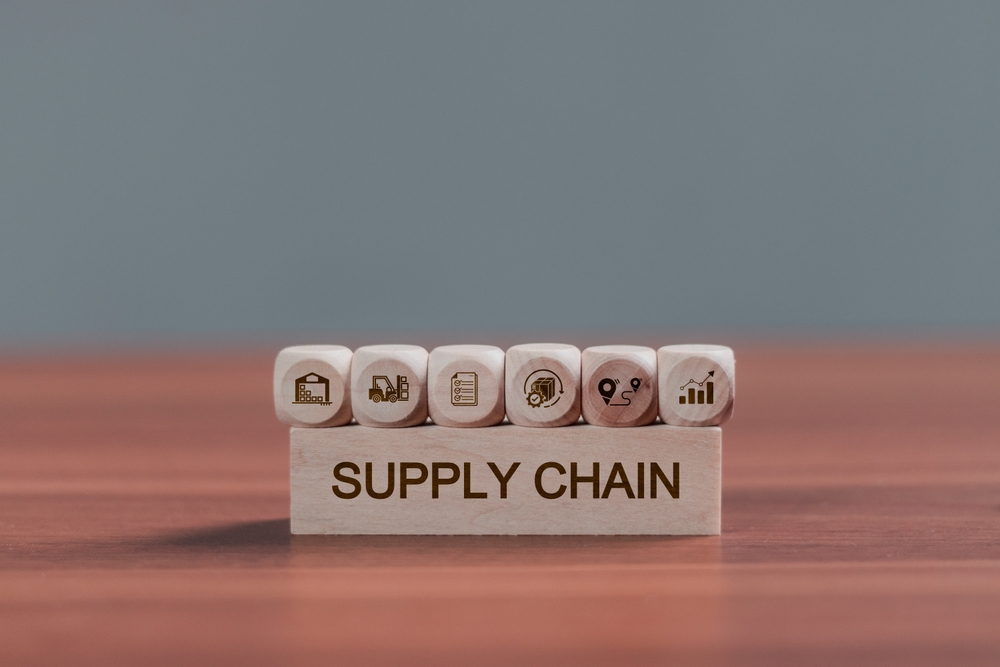
Consider how complicated traditional supply chains are:
- Multiple suppliers across continents
- A web of middlemen and intermediaries
- Limited ability to track items accurately at every step
The result? Big headaches and unpleasant surprises. From counterfeit Nike sneakers flooding online markets to food safety recalls causing panic—it’s becoming obvious we need something better.
We Need Reliable Information, and We’re Not Getting It
Let’s face it—headlines about fake goods and unethical sourcing practices aren’t rare. A report by the OECD estimates global trade in fake products alone was worth nearly $509 billion in 2019. And consumers are noticing:
- 71% of buyers prefer brands that provide complete transparency about product sourcing, according to a Label Insight transparency study.
- A study by Accenture highlights that 66% of consumers actively prefer companies embracing more transparent supply chains.
Clearly, trust matters now more than ever. But traditional methods, stuck in a maze of paper documents and fragmented procedures, simply can’t keep up.
Blockchain Could Be the Answer

Here’s where the game-changer steps in. Blockchain technology, famous because of Bitcoin, is now promising something revolutionary for supply chains: full transparency and authenticity every step of the way.
- Transparency: See exactly where your product has been and every hand it passed through.
- Immutability: Records on blockchain cannot be altered—ever. No hidden agendas or sneaky modifications.
- Security: A decentralized database makes it incredibly tough to hack or manipulate.
Think about it—no more guessing, no more doubts. You could check the authenticity of the luxury handbag you bought online with one click or verify that organic coffee beans genuinely meet ethical standards. Sounds intriguing, right? But what exactly is blockchain, and how does it provide these rock-solid assurances? Stick around—I’ve got these answers coming right next.
Understanding Blockchain in Simple Terms
If you’ve ever felt your head spinning when someone mentions blockchain, you’re definitely not alone. Sometimes, the tech talk gets overwhelming—but it doesn’t have to be. Let me simplify things for you in a straightforward, pain-free way.
What Is Blockchain Exactly?
Forget all the complicated explanations you’ve heard. Blockchain is actually just a user-friendly digital ledger—think of it like a super-transparent notebook accessible to everyone involved. Every entry is clear, transparent, and 100% open for viewing. What’s special here? It can’t be secretly changed or faked.
Picture it like this: Imagine you have a shared spreadsheet on Google Docs with thousands of people watching your every update. Everyone sees your edits in real-time, approved simultaneously by everyone. Any questionable edit would immediately raise eyebrows. That’s blockchain—only exponentially more secure and sophisticated.
You Can’t Change What You Record
This is where blockchain really shines. Once information hits the blockchain, it’s locked and permanently recorded. This unbeatable feature is known in the industry as immutability. It’s basically digital cement—once it sets, it never budges.
- No one can tamper with the entries.
- Every change or addition shows up clearly in this permanent digital record.
- This means total transparency, security, and most importantly, trustworthiness.
“Blockchain technology is the backbone of trust in a digital age, delivering authenticity that traditional methods just can’t match.” — Don and Alex Tapscott, authors of “Blockchain Revolution.”
Take food safety, for instance—if data on every step from farm to your fridge is documented on the blockchain, you’d confidently know exactly where your dinner ingredients originated and how safely and ethically they’ve been handled down to the very minute. Trust builds instantly, doesn’t it?
Or think about luxury goods or expensive jewelry: imagine immediately verifying with certainty that the watch or handbag you just bought is genuine, without any doubts lingering in your mind. Wouldn’t that peace of mind be amazing?
Blockchain makes trust easy by taking deception off the table completely. And who doesn’t want absolute confidence in their purchases?
Curious why giant brands and innovative businesses are jumping headfirst into blockchain adoption? Stick around—I promise you’ll discover exactly how blockchain beautifully integrates into supply chains next. You’ll see why this digital phenomenon has businesses so excited and why it matters to everyday shoppers like you and me.
Why Should Blockchain and Supply Chains Go Hand-in-Hand?
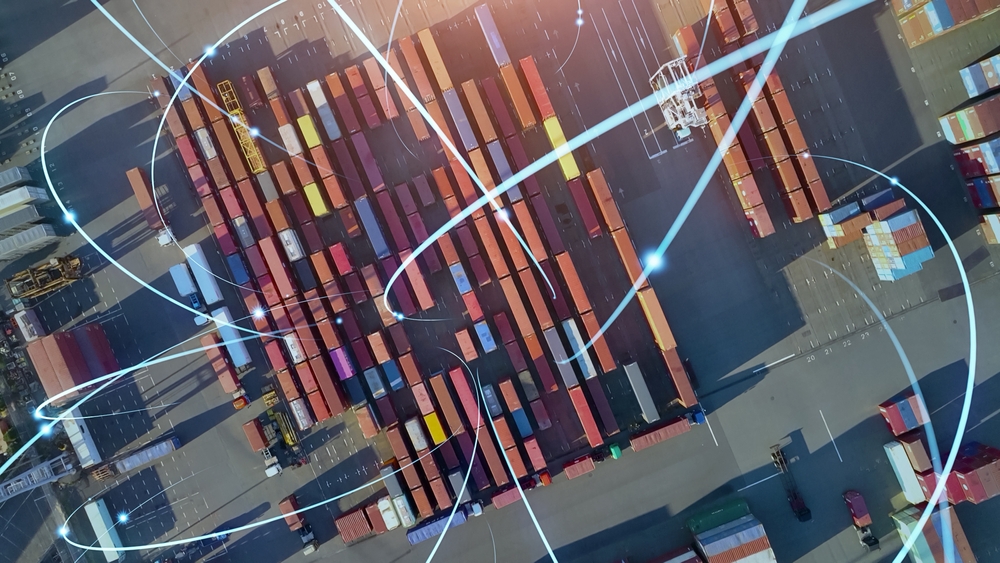
If you’ve ever bought something expensive and wondered if it was real, or stopped to question exactly where your coffee beans were sourced from, blockchain might become your new best friend. I’ve spent a lot of time exploring blockchain technology, and honestly, its potential to transform supply chains still amazes me.
Complete Transparency Across Borders
Supply chains today span across countries and continents—it’s a global puzzle where figuring out exactly what’s going on can feel downright impossible. Blockchain literally clears this mess by providing real-time, crystal clear information on every step. Businesses, suppliers, logistics providers, and even customers can see exactly what’s happening at any given moment.
“Gartner predicts by 2025, blockchain will support the global movement and tracking of $2 trillion worth of goods and services annually.”
Think about that for a moment—two trillion dollars in goods being transparently tracked and verified using blockchain. It means no guessing, no blind trusting, just cold hard facts. You and I finally get peace of mind, knowing precisely what’s happening behind the curtain.
Fighting Back Against Fake Products
Let’s face it; counterfeit products are getting sneakier by the day. The fashion and luxury sectors alone have lost billions of dollars because of fake goods infiltrating the market. Blockchain uniquely tackles this issue.
With blockchain-powered labels or tags, each product has a unique digital identity. That means verifying that the sneakers or handbag you’re buying are actually genuine can happen within seconds. No fakes, no scams—just authentic products and confident purchases.
- Did you know? According to OECD findings, counterfeit products make up about 3.3% of world trade. That’s billions of dollars in unfair losses every year.
- Using blockchain, consumers can effortlessly scan an item’s QR code using their smartphone and instantly authenticate the product’s legitimacy.
It’s about bringing power back to us—the consumers—and allowing brands to protect their value and reputation. Win-win, right?
Improved Traceability at Every Stage
Blockchain doesn’t stop with fighting counterfeits—it dramatically improves traceability, too. Have you ever wondered where that bag of coffee beans in your kitchen came from, who farmed it, and what type of journey it took?
With blockchain technology, you’re not just guessing anymore. You can track your coffee beans all the way from the very farm, through each storage point, shipping container, and distribution center, straight to the shelf of your grocery store.
Brands like Starbucks are actively benefiting from this new visibility, using blockchain to give consumers insights into their product’s journey, ensuring they’re responsibly and ethically sourced.
This kind of radical transparency builds incredible trust with customers—we want authentic products and ethical production, and blockchain might just be the solution we’ve been craving.
Curious about some real-life examples of how brands are using blockchain right now? Well, you’re about to see just how impressive these success stories truly are…
Real-Life Examples of Blockchain Changing Supply Chains
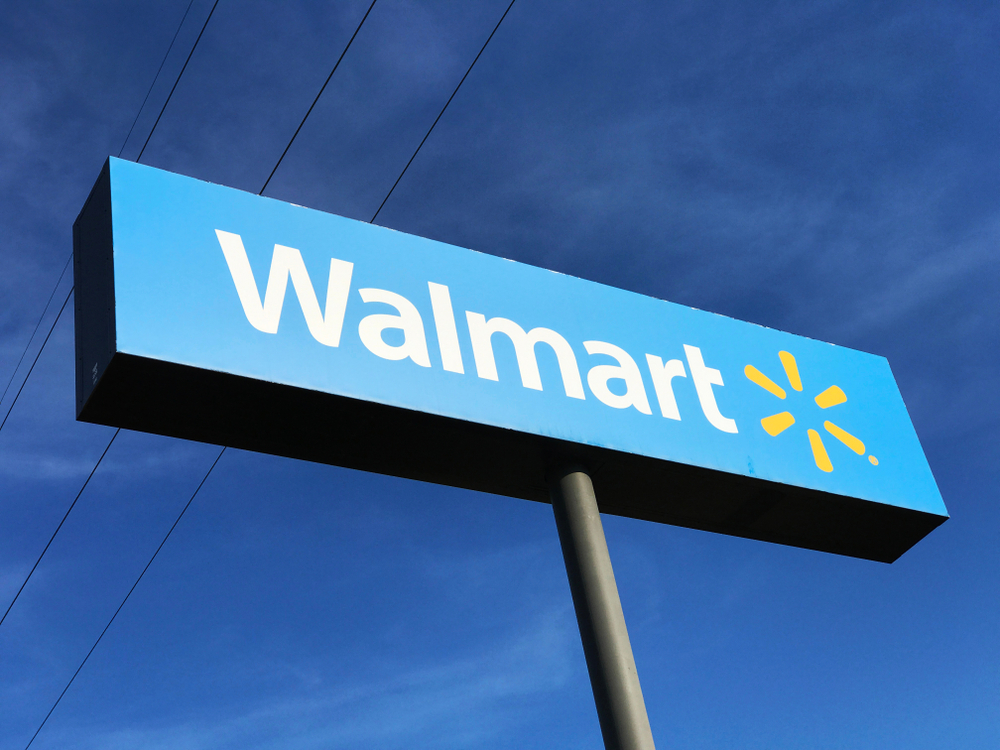
Understanding the theory behind blockchain in supply chains is one thing—but seeing it applied successfully by big-name companies truly drives the point home. Let’s check out some real examples of brands using blockchain to transform their supply chain processes.
Walmart and Food Safety—Tracing Produce to Keep You Safe
One of the biggest global giants joining the blockchain train is Walmart. They use blockchain to accurately trace their food products right down to the origins. For example, Walmart can now track leafy greens from farm to store shelves in mere seconds—what previously would have taken days or even weeks.
- Real-life impact: In a pilot project, Walmart demonstrated blockchain’s power by tracing sliced mango products to pinpoint their origin in just 2.2 seconds. Traditionally, recalls or investigations could take over a week. With this system in place, action can be swift—dramatically reducing the risk of contaminated food reaching consumers.
“Using blockchain, we can do in seconds what used to take days or even weeks. It’s a fundamental transformation in how we ensure consumer safety.” – Frank Yiannas, former VP of Food Safety at Walmart
Luxury Goods: Tangible Proof of Authenticity
Blockchain isn’t limited to food safety; it’s equally powerful in protecting high-value luxury goods such as watches or rare handbags from being counterfeited.
- LVMH (Louis Vuitton Moët Hennessy): They employ blockchain to allow customers to verify every luxury bag’s authenticity instantly. By scanning a QR code, buyers can verify manufacturing details, certifications, and supply chain history. No more doubts that your high-priced collectable is exactly what it claims to be.
Everledger’s Ethical Diamonds—Ensuring Transparency and Ethics
Let’s talk diamonds—a market notorious for unethical sourcing practices. Everledger, an innovator in blockchain solutions, makes tracking each diamond through its full lifecycle easy and secure.
- Everledger offers an incorruptible blockchain-based record through which consumers and retailers verify each gem’s authenticity, mining origin, and market journey.
- They have already recorded over 2 million diamonds—assuring buyers peace of mind, knowing their purchase wasn’t tainted by illegal or unethical practices.
“Every diamond tells a story. Everledger’s blockchain technology ensures it’s an ethical one.” – Leanne Kemp, CEO of Everledger
These incredible examples highlight blockchain’s massive impact on real lives—we’re talking enhanced safety, guaranteed authenticity, and peace of mind for consumers. But this technology isn’t limited just to these examples, or even to high-end products and food safety.
So, what other aspects can blockchain revolutionize, beyond product authenticity and safety?
Keep reading, because what comes next just might surprise you—it certainly changed the way I look at blockchain technology!
Bitcoin Isn’t the Only Blockchain Application

Whenever blockchain pops up in conversation, I notice many people instantly picture Bitcoin or cryptocurrencies. But let me clear this up right away—cryptocurrencies are just the tip of the iceberg. Blockchain has incredible potential far beyond digital currency, particularly when it comes to revolutionizing supply chains.
One of the coolest applications I’ve seen lately is how blockchain is pushing transparency and sustainability into the spotlight. Companies today increasingly claim to be ethical or environmentally friendly—but how can we as customers truly verify these bold claims?
Supply Chain Transparency and Sustainability
Ever bought a product labeled “eco-friendly”, “ethically sourced”, or “carbon neutral”? Sure, these labels sound great…but how can we trust these claims fully? Blockchain technology offers something we’ve sorely missed: verifiable proof.
- Reliable Records of Sustainability Practices: Companies using blockchain can conveniently store details on their environmental programs, carbon emissions, or ethical labor standards. For example, fashion brands like H&M and Levi’s have started exploring blockchain technologies to enhance transparency, encouraging customer confidence about sustainable practices. (Source: Harvard Business Review)
- Empowered Consumers: With blockchain-powered platforms, a quick scan of a product’s code might soon reveal every detail of its origin—including how factories treat employees, how transportation affects the environment, and how materials were sourced. Blockchain startup Provenance already provides this clear documentation across industries from seafood to fashion, enabling consumers to confidently back brands they trust.
“Transparency may be the most disruptive and far-reaching innovation to come out of social media.” — Paul Gillin
Reducing Documentation Hassle
If you’ve ever dealt with international shipments or global trade, you’ll know how painfully slow and cumbersome paperwork can be. Constant back-and-forth of documents leads to costly delays and room for costly errors. Here’s where blockchain becomes a game changer:
- Eliminating Paperwork & Errors: Maersk, one of the largest shipping companies, partnered with IBM’s blockchain platform called TradeLens. Result? A whopping 40% reduction in shipping documentation overhead!
- Faster Verification: Blockchain instantly verifies shipping records, certifications, agreements, and compliance checks. Finally, no more chasing down signatures and approvals—the entire verification happens securely and digitally.
- Optimized Communication: Every stakeholder (importer, exporter, customs, shipper) securely accesses real-time information from a shared blockchain ledger. Miscommunications drop sharply, dramatically speeding up processes.
Imagine not having to fret over whether paperwork was filled out correctly or wondering if sustainability claims are legit. Isn’t that the supply chain future you’d prefer to see?
But wait—if blockchain is reshaping documentation and transparency, can it tackle those ever-troubling supply-chain risks as well? Stick with me. I’ll show you exactly how blockchain solves those headaches in just a moment!
How Blockchain Reduces Risks in Supply Chains
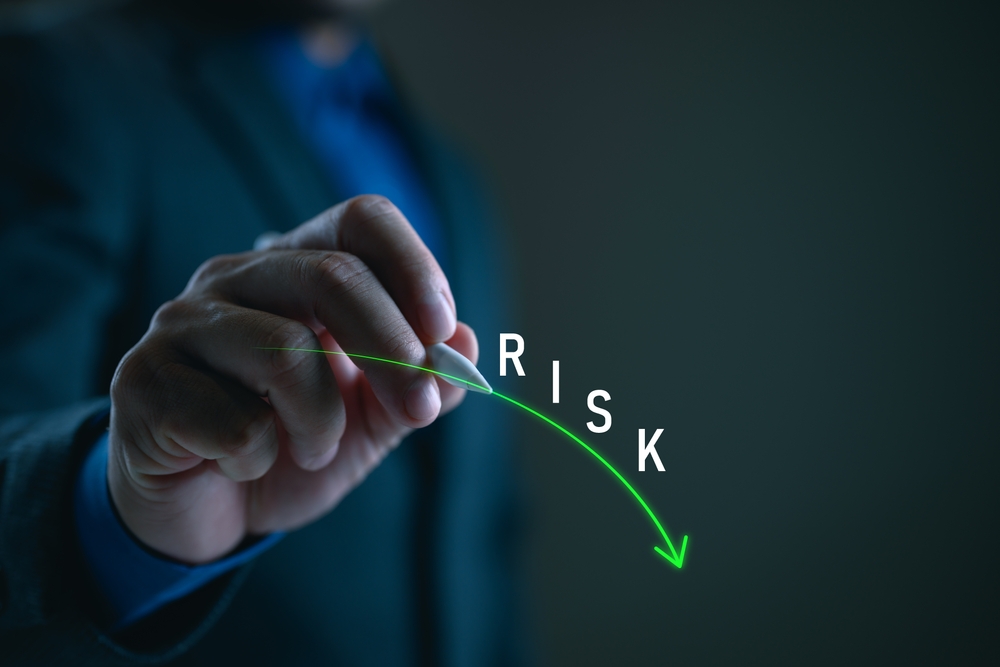
Have you ever been excited to purchase a new item, only to later find out it was fake or fraudulently sold? We’ve all been there—feeling disappointed, frustrated, or even betrayed. Well, blockchain technology has the potential to drastically reduce these common risks that haunt very traditional supply chains.
Preventing Counterfeit Goods
Counterfeit products are a major issue affecting virtually every industry—from pharmaceuticals and clothing to electronics and luxury goods. In fact, according to the OECD, counterfeit products made up about 2.5% of global trade, equaling around half a trillion dollars!
Blockchain directly tackles the counterfeit issue by providing verifiable records of authenticity and proven origin:
- Permanent Product Records: Each product’s journey—from production to store shelf—is recorded step-by-step and cannot be secretly manipulated.
- Real-Time Verification: Customers and businesses can verify a product’s authenticity instantly, with complete confidence. Imagine scanning a QR code on a luxury handbag and immediately seeing its verified history—no guesswork, no doubts.
“Fake goods don’t just cheat customers, they erode brand trust and endanger public safety. Blockchain is a powerful weapon against counterfeiting.” — Forbes
Efficient Payment Systems
We all hate payment delays, don’t we? Especially those businesses that need a smooth cash flow to keep the wheels turning. Blockchain offers an impressive solution through its ability to simplify and accelerate international payments dramatically:
- Speedy Transactions: Traditional cross-border payments can take days, but blockchain-powered payments clear within minutes or even seconds. Companies avoid costly delays.
- Transparency and Lower Fees: Blockchain cuts transaction fees drastically compared to traditional banking systems, saving businesses money whenever funds move across borders.
Building Trust Among Parties
Ever felt suspicion or anxiety when dealing with suppliers or trading partners? You’re not alone—lack of transparency often breeds distrust between supply chain parties. Blockchain flips this scenario entirely:
- Transparency Across the Board: Every stakeholder sees real-time, reliable data. No hidden surprises, no secret edits.
- Improved Cooperation: With shared visibility, suspicion fades away, leading to more collaboration. Suppliers, producers, and retailers can openly align objectives rather than working against each other.
Blockchain clearly helps smooth shaky relationships by promoting open, honest interactions, building powerful partnerships, and making supply chains more robust and reliable than ever.
Sounds fantastic, right? But you’re probably wondering about the catch—because, let’s face it, every innovation comes with hurdles. Curious what those hurdles are and how businesses successfully overcome them? Don’t navigate away yet, my friend—I’ve got you covered with some critical insights coming right up in the next section.
Overcoming Blockchain Implementation Challenges

Okay, I know what you’re thinking—Blockchain sounds amazing, but surely there must be some bumps on the road, right? Let’s be real—it isn’t as simple as flipping a switch. Yet the rewards can easily outweigh the hurdles, if you’ve got the right approach. Here’s what I’ve learned about successfully navigating common blockchain implementation challenges.
Securing Buy-In from All Players—It’s A Must
Blockchain succeeds only if everyone’s playing ball—and that means everyone, from suppliers and distributors to retail partners. The system thrives on transparency and openness, and that’s a bit of a mindset shift for businesses accustomed to traditional operations. According to a study from Deloitte, around 48% of businesses admit stakeholder buy-in is their number one blockchain concern. Hence, clear communication about blockchain’s benefits from day one is essential. Trust, transparency, and collaboration—it’s all connected.
“Coming together is a beginning; keeping together is progress; working together is success.” — Henry Ford
To illustrate, when Walmart first adopted blockchain for food safety, they dedicated considerable time and resources to educating and motivating their suppliers. This nurturing of shared goals paid off beautifully, improving accountability, communication, and delivering lightning-fast recalls when needed.
Being realistic, blockchain demands more than installing software and hoping for the best. You’ll need to adjust your workflow, integrate new technologies, train employees, and build a solid infrastructure for blockchain to truly shine. A recent McKinsey report highlighted that roughly 70% of blockchain implementations require substantial organizational changes to be effective.
- Training: Employees must understand both how blockchain works and its benefits to their daily tasks.
- Adaptation: Processes need realignment to leverage blockchain’s strengths—expect initial learning curves as teams get comfortable with new workflows.
- Strategic Management Commitment: Leadership’s proactive involvement is essential to motivate everyone and navigate through these technical adjustments swiftly.
A great example is Maersk, the shipping giant that transformed their operations with blockchain—investing not only in technology but in deeply retraining their entire operational team, leading to remarkable efficiency boosts.
Budgeting Right—Upfront Investment vs Long-Term Gains
Yes, implementing blockchain involves upfront costs, and let’s be honest, cost is a valid concern. From hardware infrastructure to software licenses, training sessions, and initial consultations—the expenses aren’t negligible. However, once you’re operational, blockchain significantly reduces ongoing costs tied to paperwork, manual record verification, and fraud detection. For instance, IBM found that blockchain solutions can lead to a 30-40% reduction in administrative costs, truly demonstrating long-term value.
Also, blockchain empowers your brand with something priceless: customer trust. Ethical sourcing, product authenticity, and transparent business practices can translate to invaluable goodwill and loyalty among consumers.
But now you might be wondering—are there specific resources or successful examples of real companies overcoming these implementation hurdles? How did they do it, and what were their secrets to blockchain success? Stick with me; the answers you’re curious about are right ahead.
Resources and Further Reading
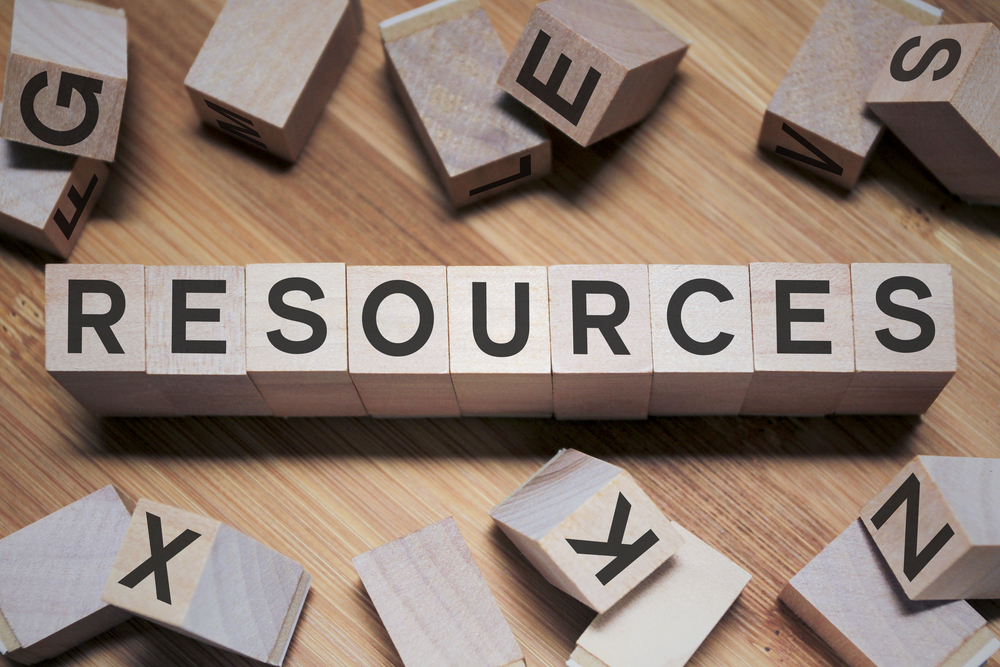
Feeling curious and want to see exactly how blockchain transforms supply chains in action? Awesome—I’ve got you covered with two incredible resources I carefully selected that will genuinely open your eyes.
Blockchain Transparency in Action
This fantastic Medium article shows clearly exactly how blockchain is redefining transparency in real-world supply chain scenarios. It breaks down blockchain’s role in ethical and secure business practices, offering clear examples that make things easy to understand. Definitely check this one out:
Medium: How Blockchain Is Revolutionizing Supply Chain Transparency
Harvard Business Review: A Transparent Supply Chain
Harvard Business Review (yep, the legendary one!) explains why supply-chain transparency matters big-time for today’s brands and their customers. They back their view with research, proving exactly how transparency fuels customer trust, protects brand reputation, and increases profits:
Harvard Business Review: Building a Transparent Supply Chain
I highly recommend checking out these insightful articles if you’re serious about getting ahead in the blockchain-powered supply chain game. Each resource gives clear proof of why more businesses are starting to adopt blockchain to build trust, beat counterfeiters, and create unmatched transparency along the entire product journey.
Speaking of adopting blockchain— are you wondering if now’s the right time for your business to jump on board? That’s exactly what I’ll cover next, including where blockchain’s headed and how smart companies can stay ahead of the curve. Trust me—you definitely don’t want to miss what’s coming up next!
Looking Ahead: The Future of Blockchain in Supply Chains

You’re probably wondering: is blockchain in supply chains genuinely the future, or just an overhyped trend that will fade away? Spoiler alert—I strongly believe it’s here to stay, and we’re on the verge of seeing it become mainstream faster than many expect.
Mass Adoption Is Gaining Serious Momentum
You might be surprised how quickly blockchain adoption is picking up speed. Major companies aren’t just toying around with ideas—they’re actively making the blockchain switch. According to a recent report from Gartner, about 40% of enterprises plan to integrate blockchain solutions into their supply chain management by 2025. That’s stark growth compared to just 5% back in 2019.
For instance, shipping giant Maersk didn’t just test blockchain—they’ve fully committed to it. They’ve teamed up with IBM to create TradeLens, a blockchain platform that has revolutionized logistics documentation, reducing shipment paperwork by up to 40%. And they aren’t alone; many more supply chain giants are lining up behind blockchain solutions now that they’ve seen the benefits firsthand.
Blockchain Integration with IoT and AI Will Take Supply Chains Up a Notch
Blockchain on its own is powerful, sure—but combined with other advanced tech like Artificial Intelligence (AI) and the Internet of Things (IoT), things get really interesting. Picture IoT sensors tracking goods in real-time, blockchain immutably verifying the location data, and AI making smart decisions based on reliable information—this is already beginning to happen.
- IBM Food Trust is another powerful example. They’ve integrated blockchain with IoT sensors to track perishable goods temperature and quality through each shipment stage. What’s the result? Dramatically reduced food spoilage and better compliance.
- AI-enabled blockchain platforms, such as Fetch.ai, look set to help supply chains predict disruptions and manage risks, optimizing routes and reducing costs significantly. It’s no longer sci-fi, these solutions are rapidly becoming mainstream.
Should Your Business Make the Jump?
The reality is—blockchain may soon become the new normal in supply chains. So, should your business get involved sooner rather than later? Absolutely. Being an early adopter comes with clear competitive advantages like increased trust, improved efficiency, and greater transparency.
Don’t just take my word for it—a study from Deloitte found that 86% of companies believe blockchain will achieve mainstream adoption within the next five years, with many already investing heavily in blockchain solutions.
The businesses that hesitate today may find themselves playing catch-up tomorrow. On the flip side, those that act proactively can build deeper trust with their customers, suppliers, and partners, gaining a lasting competitive edge.
Final Thoughts—Is Blockchain Actually Worth It?
Let’s be real: blockchain implementation isn’t a walk in the park; there are challenges to navigate. But the long-term rewards significantly outpace initial hurdles. Transparency, trust, efficiency—these aren’t just buzzwords. They translate into real-world benefits like shorter transaction times, reduced fraud, fewer product recalls, and stronger customer relationships.
If your business strives to remain relevant and competitive, blockchain isn’t merely an option—it’s quickly becoming a necessity. Trust me, jumping aboard the blockchain train sooner rather than later is something you won’t regret.
